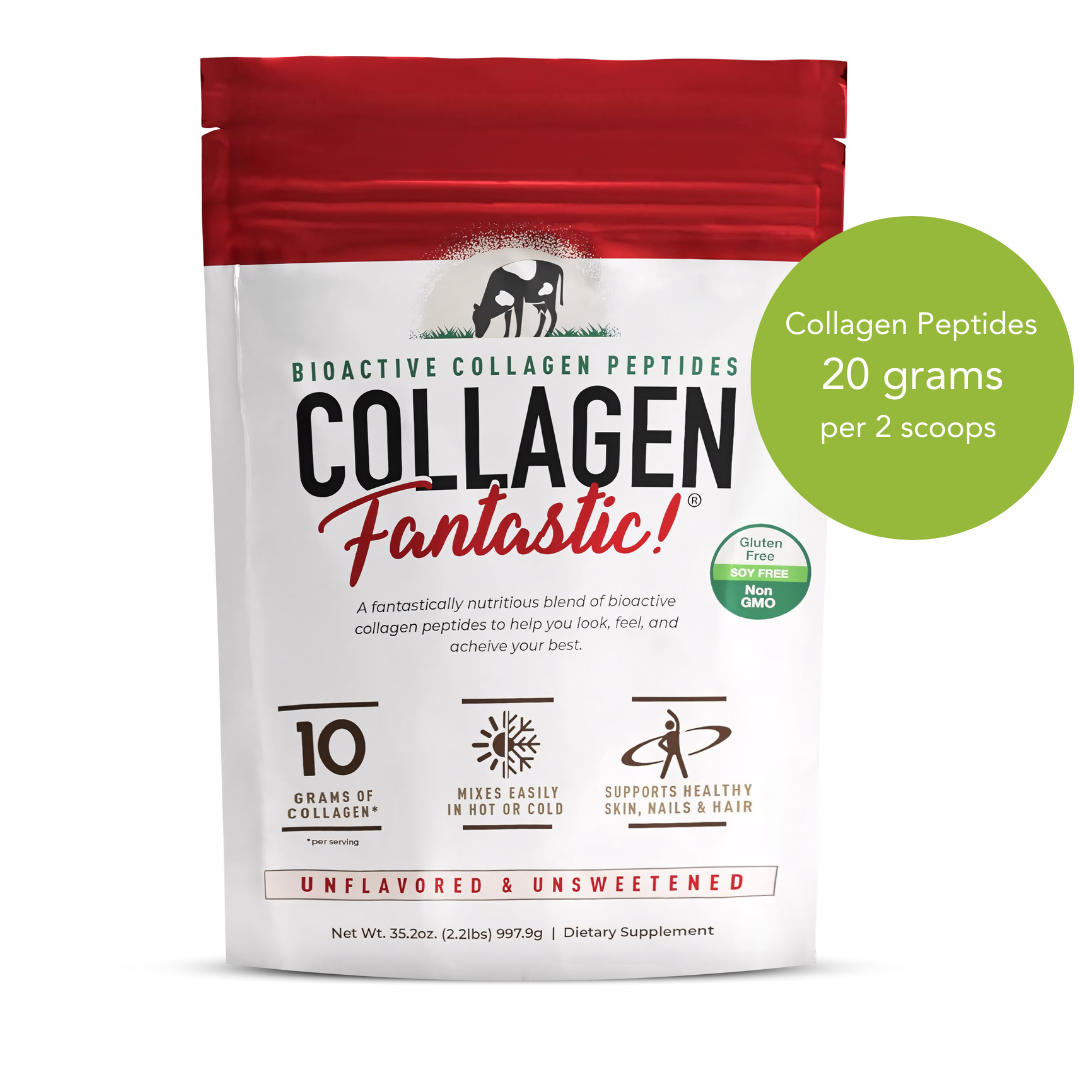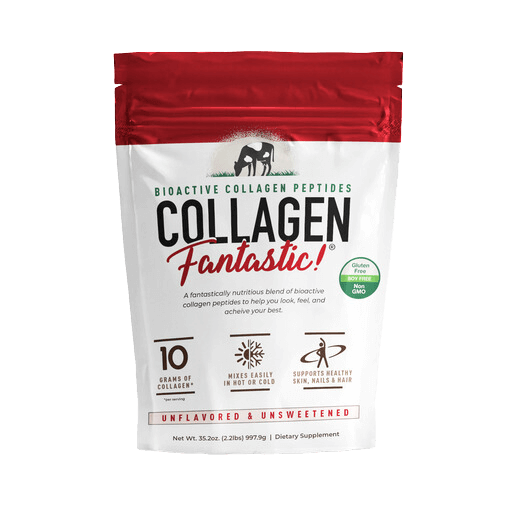Key Takeaways
-
Your metabolism doesn’t suddenly “break” after 40—but it does change in predictable, manageable ways.
-
Muscle loss, hormonal shifts, and lifestyle factors slow your calorie burn and energy balance over time.
-
The solution isn’t eating less—it’s moving smarter, eating better, and rebuilding lean muscle.
-
Protein, creatine, and collagen help preserve and restore metabolic health by supporting strength, recovery, and vitality.
-
You can reprogram your metabolism at any age with consistency, the right nutrition, and daily movement.
Introduction: The Metabolism Myth
If you’ve ever said, “My metabolism just isn’t what it used to be,” you’re not wrong—but the story is more nuanced than that.
Your metabolism doesn’t vanish after 40; it simply becomes more responsive to how you live, move, and eat. Age brings hormonal and cellular changes that can make energy regulation less efficient, but that doesn’t mean your body is doomed to slow down.
The good news? You can reset your metabolism—not by starving it, but by feeding, training, and resting it strategically.
Understanding What “Metabolism” Actually Is
Metabolism isn’t just calorie burn—it’s the entire system that converts food into energy, repairs cells, and keeps every process in your body running.
It’s made up of two key components:
-
Basal Metabolic Rate (BMR): The energy your body uses just to function—breathing, digesting, maintaining temperature.
-
Activity Thermogenesis: The energy you expend through movement and exercise.
Both can change with age, but they’re also highly adaptable. What slows down naturally can be rebuilt through muscle, movement, and nutrition.
Why Metabolism Changes After 40
Your 40s bring several physiological shifts that influence how efficiently your body uses energy:
1. Loss of Lean Muscle
Muscle is the engine of your metabolism. Starting around age 35, adults lose about 3–8% of muscle mass per decade, a process called sarcopenia. Less muscle means fewer calories burned at rest—and more energy stored as fat.
2. Hormonal Fluctuations
Estrogen, testosterone, thyroid hormones, and growth hormone all play roles in how efficiently your body burns energy and builds tissue. As they decline, energy balance and recovery can feel more difficult.
3. Decreased Physical Activity
Work, family, and stress often crowd out movement. Even small reductions in daily activity compound over years, leading to slower metabolism and increased fat storage.
4. Undereating or Chronic Dieting
Ironically, many adults try to fix a “slow metabolism” by eating less. Prolonged calorie restriction tells your body to conserve energy, reducing metabolic rate further.
The takeaway? Your metabolism doesn’t fail—it adapts. The key is learning how to guide that adaptation in your favor.
Step 1: Rebuild Muscle to Reignite Metabolism
Strength training is the single most effective metabolic reset tool available. Muscle tissue burns more calories at rest than fat does, and it improves insulin sensitivity, bone health, and overall vitality.
How to Start:
-
Focus on compound movements: squats, rows, presses, and deadlifts.
-
Train major muscle groups 3–4 times per week.
-
Gradually increase resistance or intensity.
Even two to three hours of structured strength work per week can dramatically improve metabolic efficiency.
Nutrition Support:
-
Use Fantastic Nutrition Whey Protein after workouts to provide complete amino acids that rebuild lean tissue.

Rebuilding muscle is the foundation of a long-term metabolic reset—no fad diet required.
Step 2: Feed, Don’t Starve, Your Metabolism
Your metabolism thrives on consistency—not deprivation. Undereating triggers your body’s survival mode, slowing down energy expenditure and increasing fatigue.
What to Focus On:
-
Protein: Aim for 0.8–1.0 grams per pound of body weight daily.
-
Healthy fats: Avocados, nuts, olive oil, and fish keep hormones balanced.
-
Complex carbohydrates: Whole grains, fruits, and vegetables provide fuel for both body and brain.
Small, frequent meals or evenly spaced protein-rich meals stabilize blood sugar, prevent energy crashes, and sustain fat metabolism.
Fantastic Nutrition Tip:
Blend a scoop of Whey Protein with oats or fruit in the morning to kickstart metabolism and recovery early in the day.
Step 3: Support Cellular Energy with Creatine and HMB
As you age, your body’s ability to generate ATP—the molecule that powers every movement and thought—declines.
Creatine Fantastic combines 5g of Creapure® creatine and 3g of myHMB® to directly support cellular energy and muscle repair.
-
Creatine increases ATP regeneration, keeping your metabolism firing efficiently during exercise and recovery.
-
HMB reduces muscle breakdown and speeds recovery between workouts, preventing the slow, subtle decline in strength that undermines long-term metabolic health.
Daily use helps maintain lean mass, boost endurance, and sustain the energy your metabolism relies on.
Step 4: Prioritize Sleep and Stress Management
Cortisol, your primary stress hormone, plays a major role in how your metabolism functions. Chronic stress keeps cortisol elevated, which can lead to muscle breakdown, fat storage, and insulin resistance.
How to Reset This Balance:
-
Sleep 7–9 hours per night. Growth hormone peaks during deep sleep, directly supporting metabolism.
-
Unplug before bed: Dimming screens 30 minutes prior helps lower cortisol naturally.
-
Hydrate and breathe: Even mild dehydration or shallow breathing elevates stress hormones.
Consistent, restful sleep can reset your energy and appetite regulation faster than any supplement or diet ever could.
Step 5: Move More Throughout the Day
You don’t have to train harder—you just need to move more often. Non-exercise movement (walking, stretching, taking stairs) contributes more to daily calorie burn than most people realize.
Simple ways to increase metabolic activity:
-
Take a short walk after meals.
-
Set a timer to stand or stretch every hour.
-
Add mobility work or yoga on rest days.
This low-level activity keeps your metabolism flexible—burning energy efficiently around the clock.
Step 6: Avoid Metabolic “Traps”
Even well-meaning habits can unintentionally suppress metabolism. Watch for these common mistakes:
| Trap | Why It Backfires | Better Alternative |
|---|---|---|
| Skipping meals | Lowers energy and slows metabolism | Eat balanced, protein-rich meals regularly |
| Overdoing cardio | Burns muscle as well as fat | Mix cardio with strength training |
| Chronic dieting | Teaches body to conserve calories | Alternate calorie phases, not extremes |
| Poor hydration | Slows digestion and recovery | Drink half your body weight in ounces daily |
What a “Reset” Really Means
Resetting your metabolism isn’t about a cleanse or a 7-day fix—it’s about retraining your body’s systems to run more efficiently.
The true reset looks like this:
-
Regular strength training
-
Balanced, nutrient-dense meals
-
Consistent hydration and sleep
-
Steady supplementation (protein, creatine, collagen)
When you treat your metabolism as something to train—not punish—you regain energy, confidence, and long-term balance.
Frequently Asked Questions
1. Can you really change your metabolism after 40?
Yes. Your metabolism is adaptable at any age. Strength training, proper nutrition, and consistent recovery can restore metabolic efficiency and energy levels within weeks.
2. Should I eat fewer calories as I get older?
Not necessarily. The goal is to eat enough to support muscle maintenance and activity. Focus on nutrient density rather than restriction—especially adequate protein and healthy fats.
3. How do protein and creatine help metabolism?
Protein increases calorie burn through digestion and supports lean tissue repair. Creatine boosts cellular energy production, helping muscles (and the brain) work more efficiently even at rest.
4. How long does a metabolic reset take?
Within 4–8 weeks of consistent training, sleep, and nutrition, most people notice improved energy, body composition, and strength. Your metabolism adjusts gradually as your habits do.
The Bottom Line
Metabolism after 40 isn’t a mystery—it’s a reflection of how your body responds to your habits. You can’t outsmart biology, but you can work with it.
Build muscle, fuel properly, manage stress, and recover intelligently. With the right plan, your 40s, 50s, and beyond can be your most energetic years yet.
Fantastic Nutrition Whey Protein, Collagen Peptides, and Creatine Fantastic form the foundation of that plan—supporting muscle, recovery, and metabolic power from the inside out.











